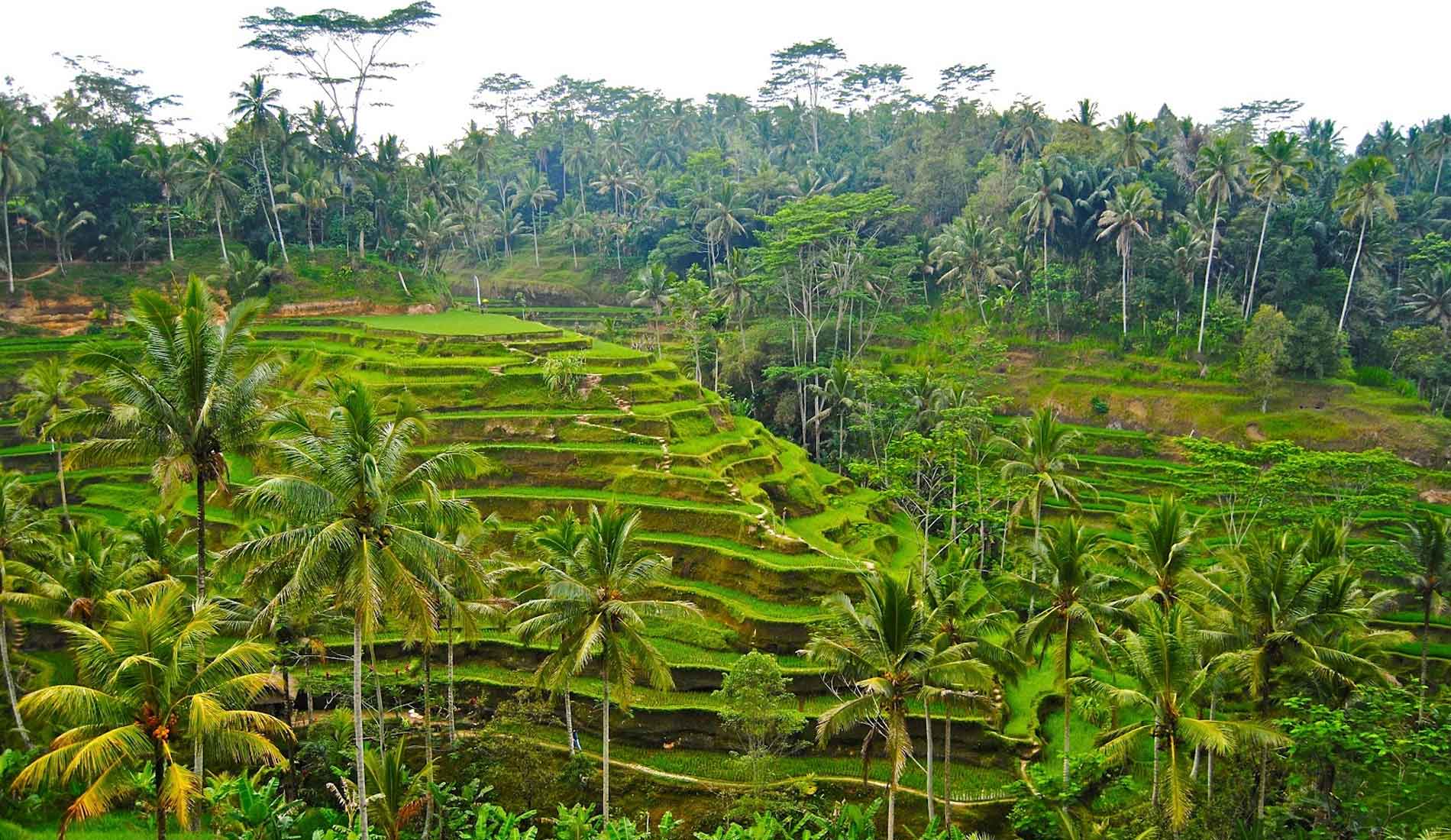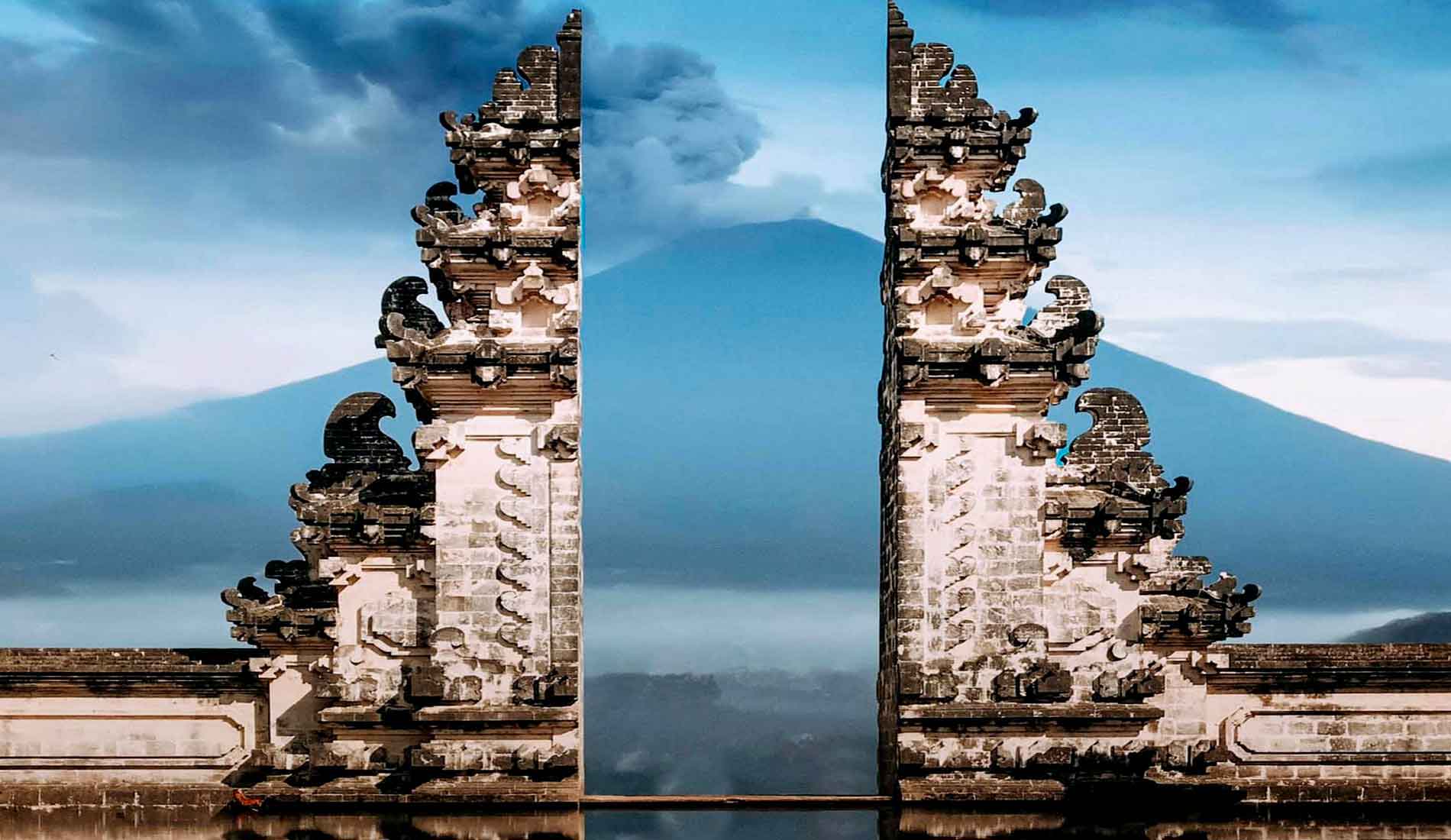Besakih Temple
Nestled on the slopes of Mount Agung, Besakih Temple stands as Bali's largest and most sacred temple complex. Known as the Mother Temple of Bali, this ancient site is a spiritual center for Balinese Hinduism, consisting of over 80 individual temples spread across terraced hillsides. The main temple, Pura Penataran Agung, offers breathtaking views of lush valleys and volcanic landscapes, creating a serene and inspiring atmosphere.
Visitors of Besakih Temple can explore its beautifully carved stone gateways, towering pagodas (meru), and intricate shrines, each reflecting centuries of Balinese craftsmanship and devotion. The temple is not only a place of worship but also a centre for cultural ceremonies and traditional rituals. It is best to come in the morning when the temple is less crowded, and the mountain backdrop is often clear.
Whether you are seeking spiritual enrichment or simply wish to admire Bali's cultural heritage, Besakih Temple offers an unforgettable experience. Don’t forget to dress modestly and hire a local guide to fully appreciate the temple's rich history and significance.
History and Legends of Besakih Temple
Besakih Temple, often called the Mother Temple of Bali, is the island's most significant and oldest Hindu temple complex. Located on the southwestern slopes of Mount Agung, Bali's highest and most sacred volcano, Besakih Temple has been a spiritual center for centuries. Its origins are deeply rooted in Balinese mythology, Hindu philosophy, and ancient Javanese history.
The Origins and Founding of Besakih Temple
The history of Besakih Temple dates back to the 8th century, when a Hindu sage from Java named Rsi Markandeya traveled to Bali. According to Balinese folklore, Rsi Markandeya was guided by divine visions to Mount Agung, where he was instructed to establish a sacred place of worship. Upon arriving, he and his followers began clearing the land and performing purification rituals.
One of these rituals involved burying a "Panca Datu", a collection of five sacred metals—gold, silver, copper, iron, and bronze into the ground as a spiritual foundation. This act is believed to have brought protection and prosperity to the region, marking the official establishment of Pura Basuki, the original shrine of what would later become Besakih Temple. The name "Basuki" is derived from the Sanskrit word "Vasuki", referring to the mythical serpent that symbolizes balance and protection in Hindu culture.
Development Through the Centuries
Over the centuries, Besakih Temple expanded into a vast religious complex under the influence of Balinese kings and religious leaders. During the reign of the Gelgel Kingdom in the 14th century, the temple was further developed and elevated in importance. The complex now comprises 23 separate but related temples, with Pura Penataran Agung as the central and most prominent sanctuary.
Each temple within the complex serves a specific purpose, representing different aspects of Hindu cosmology and Balinese spiritual life. The multi-tiered pagodas, known as "meru", symbolize Mount Agung and Mount Meru, the sacred cosmic mountain in Hindu and Buddhist mythology.
Historical Significance and Miraculous Survival
One of the most remarkable historical events associated with Besakih Temple occurred in 1963, when Mount Agung erupted in one of the most devastating volcanic eruptions in Balinese history. Lava flows destroyed several surrounding villages and claimed thousands of lives. However, the temple itself miraculously remained untouched, despite being directly in the path of the eruption.
The Balinese saw this as a divine sign, reinforcing the temple's spiritual power and its role as a protector of the island. To this day, locals believe that Besakih Temple stands under the protection of the gods, particularly Hyang Widhi Wasa, the supreme deity in Balinese Hinduism.
Cultural and Religious Importance Today
Today, Besakih Temple remains the heart of Balinese Hindu worship. It hosts numerous religious festivals and Odalan ceremonies, which celebrate the temple's anniversary based on the Balinese lunar calendar. Pilgrims from across the island come to offer prayers, make offerings, and seek
General Information and Visitor Guidelines for Besakih Temple:
Besakih Temple, known as the Mother Temple of Bali, is the island's largest and most significant Hindu temple complex. Located on the southwestern slopes of Mount Agung, it serves as the spiritual heart of Balinese Hinduism. To ensure a respectful and enjoyable visit, it’s important to understand the temple’s general information and visitor guidelines.
General Information:
- Location: Besakih Village, Rendang District, Karangasem Regency, East Bali
- Opening Hours: Daily from 8:00 AM to 6:00 PM, but ceremonies may extend beyond these hours.
- Entrance Fee: IDR 100,000 for adults and IDR 50,000 for children (includes saroong, buggy car & a local guide).
- Best Time to Visit: Morning hours (8:00–10:00 AM) for cooler weather and clearer views of Mount Agung.
Visitor Guidelines:
- Dress Modestly: Visitors must wear a sarong and sash. Shoulders and knees should be covered as a sign of respect.
- Respect Religious Practices: Avoid entering areas designated for prayer and ceremonies unless invited by the temple staff.
- Stay with Your Guide: To navigate the vast complex and understand its history, it’s recommended to hire a local guide.
- Maintain Cleanliness: Dispose of trash properly and avoid touching or climbing on the shrines.
- Photography: Photography is allowed, but avoid using flash during ceremonies or when worshippers are present.
- Due to the temple's elevated location, expect some walking and stair climbing. Wear comfortable footwear and stay hydrated.
- Avoid Visiting During Menstruation: Women who are menstruating are respectfully asked not to enter the any temples.

 +62 8133 700 3796
+62 8133 700 3796







